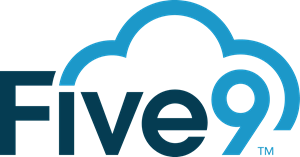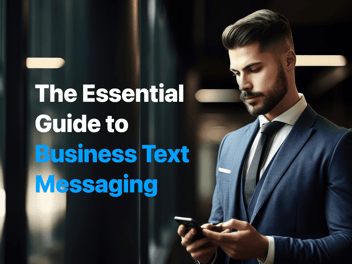Contacting Leads: How To Boost Your Connect Rate Using AI

AI adoption has dramatically shifted the quest for businesses to connect with potential clients. As companies vie for an edge, AI reshapes the lead generation and pursuit game with stunning efficiency.
The McKinsey Global’s State of AI Survey 2023 underscores this shift: 41% of businesses slashed marketing and sales outlays with AI in 2022, while an impressive 65% enjoyed a revenue boost.
This article zooms in on AI's burgeoning role in lead contact, from sharpening connection rates to powering sales growth. We dissect the value of qualified leads, the hurdles sales teams face, and the transformative clout of AI-powered tools. Let’s get started.
What Is a Qualified Lead?

Qualified leads are the cornerstone of an efficient sales process, distinguished by their higher probability of converting into paying customers. These leads are meticulously assessed and prioritized based on specific criteria, such as their purchasing potential, engagement level, and alignment with the targeted buyer personas.
The segmentation process is pivotal in this context, enabling marketers to categorize leads into groups with similar characteristics and needs. By identifying and focusing on qualified leads, companies can tailor their marketing strategies more effectively, ensuring their messaging resonates with the right audience.
For example, a tech firm selling enterprise software might categorize its leads into small, medium, and large businesses. This allows for personalized outreach:
- Small Businesses: The firm targets small businesses with messaging that emphasizes the affordability and simplicity of their software solutions.
- Medium Businesses: For medium-sized businesses, the firm's approach might focus on the software's ability to support growth and increase efficiency.
- Large Enterprises: The firm targets large enterprises with a focus on scalability, advanced integration capabilities, and comprehensive support services.
Such a tailored assessment and prioritization strategy lets you channel your sales efforts on leads with the most conversion potential, boosting the likelihood of success.
Characteristics of Qualified Leads

Qualified leads are potential customers who have not only shown interest in a product or service but have also met specific criteria indicating their higher likelihood of making a purchase. These leads stand out due to certain characteristics that suggest they are well-aligned with the brand's offerings.
Key characteristics of qualified leads include:
- Demographics: Information such as age, gender, income level, education, and job title helps in determining whether a lead falls within the target market of a business.
- Behavior: This encompasses the actions taken by leads, such as website visits, product inquiries, or interactions with marketing content, which indicate interest and engagement.
- Engagement Level: The frequency and depth of interaction with the brand, whether through social media, email or text messaging, or participation in webinars, reflect a lead's interest and readiness to engage further.
By focusing on these characteristics, businesses can more accurately identify and pursue potential customers most likely to convert.
For example, a health and wellness company may identify a qualified lead as someone who has repeatedly visited their website’s nutritional supplement pages. This lead also fits their target demographic of health-conscious individuals aged 25-40.
Further, suppose the individual has signed up for the company's newsletter and engaged with their content on social media. In that case, these behaviors demonstrate a heightened level of interest and engagement, solidifying their status as qualified leads for the company's products.
The Challenges of Contacting Leads
Engaging with leads is a critical yet challenging part of the sales journey. Ever wondered why some leads convert while others don't? Or how to identify the ones that are most likely to turn into customers?
Let’s discuss how to effectively target the right audience, identify potential customers at various stages of the sales funnel, tackle low conversion rates, and efficiently pinpoint high-quality leads.
1. Targeting the Right Audience
One of the key challenges in lead generation is ensuring that sales efforts are directed towards the most appropriate demographic. A well-defined strategy can significantly enhance the efficiency of a sales team, making sure that their time and resources are effectively directed toward prospects with the highest likelihood of conversion.
Challenges in targeting the right audience include:
- Time-Consuming Administrative Tasks: Sales teams often find themselves bogged down with administrative duties like data entry and customer information management, which can divert attention from the main goal of identifying and engaging with the right leads.
- Prospecting Difficulties: Pinpointing potential leads that align with the desired demographic profile requires substantial effort and resources. It's a process that demands meticulous research and analysis to ensure that the audience targeted is indeed the one most likely to convert.
- Maintaining Lead and Customer Data: Keeping track of interactions, preferences, and engagement levels with leads and customers is a complex, ongoing task. Accurate and updated data is crucial for understanding which demographics are most responsive and worth pursuing.
- Consistency in Follow-up: Regular and effective follow-up is essential in lead generation. However, ensuring consistent engagement with the right audience can be challenging, often leading to missed opportunities if not managed properly.
2. Identifying Potential Customers in The Sales Funnel

Effectively identifying potential customers within the sales funnel involves determining which prospects are on the path to becoming valuable clients. The main challenges in this process include:
- Segmenting Leads: Appropriately categorizing leads at various stages of the sales funnel is essential for focused and effective engagement.
- Analyzing Lead Behavior: Deciphering the actions and interests of leads within the funnel demands thorough analysis, which can be both intricate and time-consuming.
- Predicting Lead Conversion: Accurately forecasting which leads will convert and at which stage in the funnel they are most likely to do so is a complex and often uncertain task.
- Adjusting Strategies: Constantly adapting sales strategies in response to how leads progress through the funnel is crucial but challenging.
For instance, an education provider may use engagement metrics such as webinar attendance, course inquiries, and website interactions to score and segment leads. However, they still face difficulties predicting which leads will advance from showing initial interest to enrolling in a course.
3. Difficulties in Identifying High-Quality Leads Manually
Manually pinpointing high-quality leads is like searching for a needle in a haystack. It's a painstaking process that requires sifting through vast amounts of data, often leading to overlooked opportunities and misjudged potential.
For instance, a small marketing firm might spend hours reviewing client interactions and background information to determine which leads will engage. Despite their efforts, the manual process is fraught with the risk of human error and bias, potentially leading to overlooking promising leads or pursuing less fruitful ones.
This challenge highlights the need for more efficient, data-driven (and AI-driven, too, as you’ll see below) approaches to lead qualification, ensuring that the focus is on the most promising prospects.
4. Low Conversion Rates and Ineffective Lead Generation
Low conversion rates and ineffective lead generation hinder a business's growth. These issues stem from several key factors:
- Inadequate Lead Capture: This initial challenge involves failing to effectively identify or record potential customers, which means valuable leads might slip through the cracks.
- Poor Lead Qualification: Often, businesses struggle to assess the potential of leads accurately. This results in spending time and resources on leads less likely to convert, impacting overall sales efficiency.
- One-Size-Fits-All Approach: Ineffective lead segmentation leads to generalized marketing efforts. This approach rarely resonates with the diverse needs and interests of different leads, resulting in poor customer targeting and reduced appeal.
The consequences of these challenges are far-reaching:
- Reduced Sales Efficiency: Sales teams end up focusing on unproductive leads, leading to wasted time and effort.
- Poor Customer Targeting: Generalized marketing efforts fail to engage specific customer groups effectively, diminishing the impact of campaigns.
- Missed Opportunities: Quality leads might be overlooked due to inadequate capture and qualification processes, leading to potential losses in sales.
- Increased Marketing Costs: Ineffectively targeted campaigns can escalate marketing costs while yielding lower returns.
Now, let’s explore how AI can make your life easier with advanced lead management processes so that you can connect with leads effortlessly.
How AI Helps Connect with Qualified Leads
AI-powered chatbots have dramatically transformed the landscape of lead generation and engagement, offering numerous benefits for businesses looking to connect with potential customers more effectively. Here are some key advantages of using AI in contacting leads:
- Automated Lead Qualification: AI chatbots efficiently identify potential customers based on their interactions, significantly saving time and resources in the qualification process.
- Vital Information Gathering: These chatbots collect important data about leads, such as contact details and preferences, which aids in crafting more personalized marketing strategies.
- Instant Customer Query Resolution: AI chatbots provide immediate responses to customer inquiries, enhancing user engagement and overall satisfaction.
- Deeper Insights into Audience Behavior: The data gathered by chatbots help businesses gain a better understanding of their target audience's needs and behaviors.
- 24/7 Availability: AI chatbots can operate around the clock, ensuring that leads are engaged and queries are answered at any time, improving lead nurturing and customer service.
- Scalability: AI allows for handling a large volume of leads simultaneously, making the process more efficient and scalable for businesses of all sizes.
- Cost-Effectiveness: By automating various aspects of lead engagement and qualification, AI chatbots help reduce operational costs associated with manual lead handling.
- Personalized User Experiences: AI can tailor interactions based on individual lead behaviors and preferences, creating a more personalized and effective user experience.
For instance, a small online retail store using an AI chatbot can interact with customers, gather their preferences, and provide tailored product recommendations. This engages the customer and also enables the chatbot to qualify leads by collecting valuable information about their interests and purchasing behavior.
How to Use AI to Connect with Leads

AI and AI-powered chatbots offer a dynamic approach to connecting with leads, optimizing various aspects of the lead engagement and qualification process. Consider a real estate agency using an AI chatbot to interact with potential property buyers on its website. Here's a detailed look at the specific use cases of AI in connecting with leads:
- Instant Engagement: AI chatbots provide immediate responses to lead inquiries, ensuring that no potential customer is left waiting. This prompt engagement helps maintain interest and can increase the likelihood of lead conversion.
- Automated Lead Nurturing: AI tools automate the nurturing process by sending timely, personalized follow-up messages, educational content, and updates to keep leads engaged and informed throughout their decision-making journey.
- Setting Up Appointments with Sales Teams: Chatbots can efficiently schedule appointments and calls between leads and sales representatives, streamlining the process and ensuring timely interactions.
- Filtering Out Non-Prospective Leads: AI analyzes interaction patterns and lead responses to distinguish between prospective and non-prospective leads. This allows sales teams to focus their efforts on leads with higher conversion potential.
- Lead Enrichment and Real-Time Database Updating: Chatbots continually gather and update lead information, such as contact details, preferences, and interaction history, enriching the lead database with valuable, current data.
- AI-Powered Analytics: AI systems offer deep insights into lead behavior, preferences, and engagement levels, helping businesses understand their audience better and tailor their marketing and sales strategies accordingly.
- Sentiment Analysis: AI can assess the tone and sentiment of conversations with leads, providing critical insights into their attitudes, concerns, and likelihood of conversion, enabling more targeted and empathetic communication.
- Call Transfers: In scenarios requiring human intervention, AI chatbots can smoothly transfer leads to live agents for more in-depth discussions or to address complex queries, maintaining a seamless customer experience.
Integrating AI into the lead management process streamlines lead handling and enhances the quality of interactions, leading to more effective lead nurturing and increased conversion rates.
Final Thoughts
Embracing AI in lead generation and marketing heralds a transformative era in business engagement. Tools like AI-powered chatbots, automated emails, and advanced data analytics have become indispensable, boosting efficiency, personalization, and targeting acuity.
Looking ahead, AI texting stands out as an innovative frontier, offering a more immediate and personalized connection with prospects. This tech facilitates dynamic, real-time conversations that elevate engagement and the likelihood of conversion.
Businesses leveraging AI texting and similar technologies can stay at the industry's forefront, keeping their lead-gen tactics relevant and responsive to the ever-changing currents of customer communication and preferences.
A programmer by trade, Nick Saraev is a freelance writer and entrepreneur with a penchant for helping people achieve their business goals. He's been featured on Popular Mechanics & and Apple News and has founded several successful companies in e-commerce, marketing, and artificial intelligence. When he's not working on his latest project, you can find him hiking or painting.


.png?width=512&height=512&name=guru%20(1).png)

.png?width=199&height=109&name=salesforce-logo1-removebg-preview%20(1).png)


.webp?width=716&height=569&name=banner-img%20(1).webp)



.png?width=352&name=asdfhjsd%20(1).png)